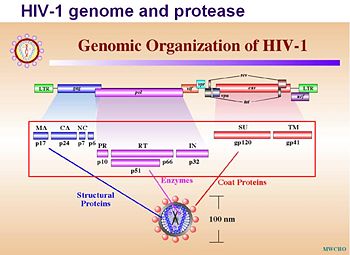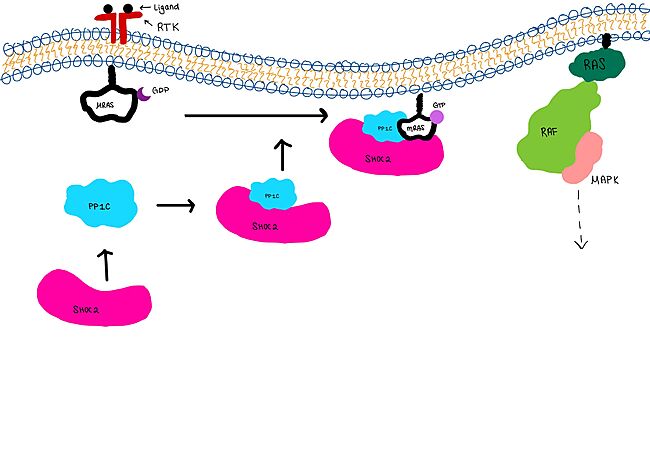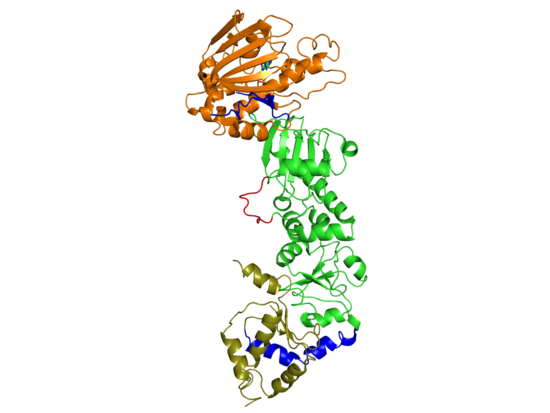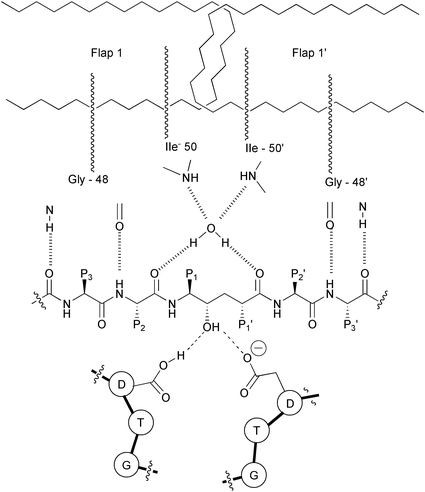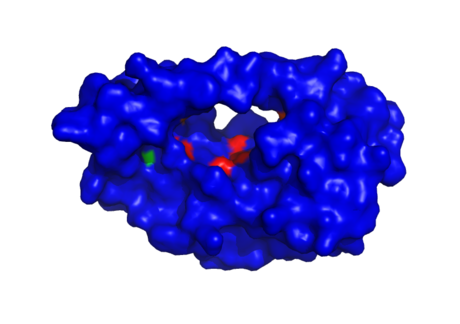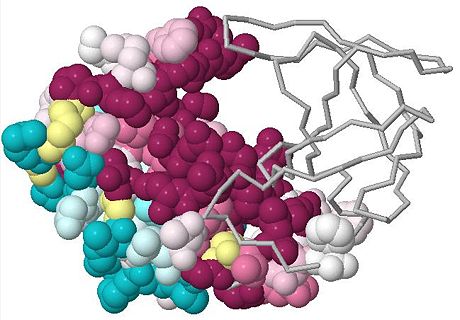User:Tsung-Yi Lin/Sandbox
From Proteopedia
Contents |
HIV-1 protease
HIV-1 Protease is a viral aspartic protease that responsible for maturation of human immunodeficiency virus (HIV).
HIV-1 protease cleaves an human immunodeficiency virus (HIV) precursor proteins, such as cleaving the env protein, glycoprotein (GP) 160, into gp41 and gp120. Gp120 protrudes from the surface of HIV and binds to CD4+ T cells and gp41 embedded in the outer envelope help gp120 bind CD4+ T cells, and they both play a role in HIV's infection of CD4+ T cells. Therefore, HIV-1 protease make the virus have the ability to infect new cells by the cleave process. In other words, HIV-1 protease is responsible for maturation of the virion by cleaving proteins into their mature form.
Because the cleave step results in infectious viral particles, Drugs called protease inhibitors can interfere with this step of the viral life cycle and further prevent HIV infection progressing. Thus, many drug designs or much pharmaceutical research conduct by understanding the structure of HIV-1 protease active site and by inhibition of its activity disrupts HIV’s ability to replicate and infect additional cells.
Background
World wide, the predominant virus is HIV-1 – associated with high number of deaths.
As of January 2006, it has been estimated that AIDS has killed more than 25 million people since it was first recognized on December 1, 1981.
The new viral particles cannot enter the host cell without maturation which require HIV-encoded protease.
Since HIV-1 protease play a vital role for infection, it has been studied as a drug target.
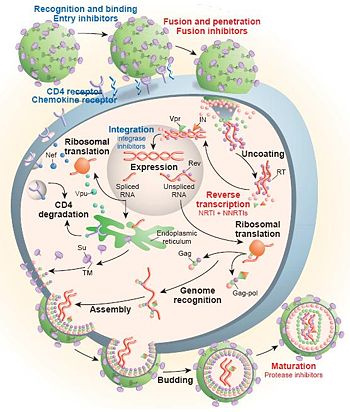
HIV genome and HIV-1 protease
HIV genome contains three main genes: gag, pol, and env.
- gag gene codes for structural proteins which forms the ‘body’ of the viral particle, among other proteins.
- Pol gene on the other hand codes for three essential enzymes which are Reverse Transcriptase (RT), Integrase (IN) and Protease (PR), among other proteins.
- env gene codes for viral envelop proteins.
HIV-1 Protease acts as ‘chemical scissors’ to cleave the polyproteins into functional constituent proteins. This maturation process occurs as the virion buds from the host cell.
HIV-1 protease structure
Family and Biological unit
- HIV-1 protease belongs to aspartic family, which also includes digestive enzyme pepsin, the lysosomal cathepsin, share common catalytic mechanism
- It functions as a homodimer (two identical polypeptide chains) with only one active site.
- It consists 99 amino acids, which forming 10 β-strand and 1 α-helix.
Domains in HIV-1 protease
Terminal domain or dimerization domain
- Consists of the termini four-stranded beta-sheet; (residues 1-4, and 95-99 of each monomer), the turn encompassing residues 4-9, and the helix (residues 86-94 of each monomer). This domain is quite crucial in dimer formation and stabilization of an active PR.
The core domains
- These are two; one from each monomer.
- Composed of primarily four beta-strand structures; and is quite compact.
- Residues 10-32 and 63-85 from each monomer make up the domain sequence
- The conserved Asp25-Thr26-Gly27 catalytic triad, is situated at the interface of the core domains from the two monomers.
- This domain is quite useful in dimer stabilization, as well as the catalytic site stability.
- The interface between the core and terminal domains is composed primarily of small hydrophobic residues. The helix of the terminal domain packs against several beta-strands of the core domain.
The flap domains
- This domain includes a mostly solvent exposed loop (residue 33-43) preceding the beta hairpin containing the flaps (residue 44-63).
- Flexible flaps enclose the active site and provide important ligand binding interactions.
Structure analysis
The concavity analysis shown below can be used to determine possible binding spots. The most likely spot shown red determined with HotPatch
Conserved residues for this protein was analyzed with ConSurf
Reference
- ↑ Roger J Pomerantz & David L Horn, Twenty years of therapy for HIV-1 infection, Nature Medicine, 2003, 9, 867-873,
- Retroviral proteases, Ben M Dunn, Maureen M Goodenow, Alla Gustchina, and Alexander Wlodawer, Genome Biol. 2002; 3(4): reviews3006.1–reviews3006.7.
- Crystal Structures of Highly Constrained Substrate and Hydrolysis Products Bound to HIV-1 Protease. Implications for the Catalytic Mechanism, Joel D. A. Tyndall, Leonard K. Pattenden, Robert C. Reid, Shu-Hong Hu, Dianne Alewood, Paul F. Alewood, Terry Walsh, David P. Fairlie and Jennifer L. Martin, Biochemistry, 2008, 47 (12), pp 3736–3744
- Solution Structure of the Mature HIV-1 Protease Monomer: INSIGHT INTO THE TERTIARY FOLD AND STABILITY OF A PRECURSOR, Rieko Ishima, Dennis A. Torchia, Shannon M. Lynch, Angela M. Gronenborn, and John M. Louis, J. Biol. Chem., Vol. 278, Issue 44, 43311-43319, October 31, 2003
- HIV-1 protease: mechanism and drug discovery, Ashraf Brik and Chi-Huey Wong, Org. Biomol. Chem., 2003, 1, 5 – 14
http://www.niaid.nih.gov/factsheets/hivinf.htm
http://www.stanford.edu/group/virus/retro/2005gongishmail/HIV.html

